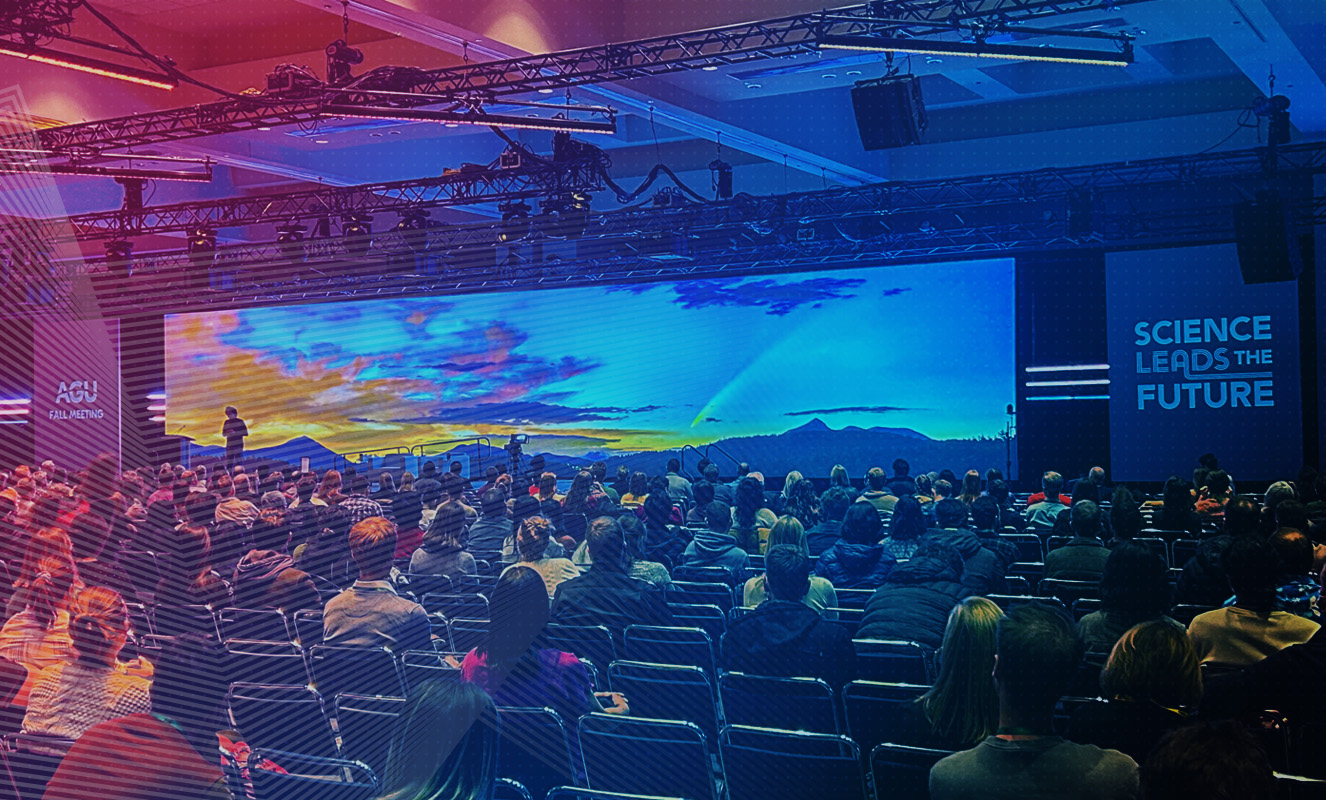
When associations experiment with new ideas and technologies – and invite new voices to the discussion – members benefit from more valuable meetings, more relevant content and an enhanced ROI.
As we all can attest, our industry looks different today than it did three years ago. We were all forced into experimentation as we went from designing, planning and executing in-person meetings to virtual. While we all feel more settled in 2023 – and ready to stay focused on the path ahead rather than behind – we may want to keep some of the forced-upon-us lessons of the past few years, especially that culture of experimentation.
When organizations promote a culture that supports and celebrates the act of innovating and experimenting, the results are often felt broadly, and can even lead to new levels of member loyalty, satisfaction and acquisition.
One such example is the American Geophysical Union (AGU). The AGU team’s commitment to pushing the envelope and making investments in the annual Fall Meeting’s future creates the perfect environment for great ideas to thrive and exceptional experiences to be designed for – and had by – their more than 20,000 attendees.
The digital infrastructure can lay a foundation for a future of successful meetings
As the channels through which attendees and speakers join and participate in meetings continue to evolve, so too must the event’s digital infrastructure (i.e., the foundational systems and resources that are necessary to the information technology (IT) capabilities of an event). For example, on a large-scale hybrid event such as AGU’s, there are multiple sources of data: registration, session, presenter, website/platform, video content hosting, etc. The demand of today’s events requires that all of these different sources and destinations of data – often supplied by multiple vendors – talk to each other and update in real time. The digital architecture of your event must allow for this simultaneous communication.
When a presenter or planner updates a piece of session data, for example, we want that update to reflect across the event website/platform, digital signage at the venue, and internal communications channels, as well as generate and send presenter links to virtual presenters – all automatically.
Building and implementing an effective framework requires a planning team who can look ahead to the inevitable evolutions in attendee expectations and decide to make investments in infrastructure and technology now to meet those needs in the years to come.
To get started, some ideas:
- Plan/build your event to easily accommodate both in-person and virtual audiences and presenters for all sessions (as budget allows).
- Play with your programming. Try different formats of sessions and see what sticks. For example, make education available on demand and leverage live sessions for discussions with topic-specific expert moderators.
- Figure out your logistical challenges first, then reverse engineer the solution.
- Consider artificial intelligence-based translation services to open up your event to international, non-English-speaking participants.
- Use simple robotic cameras in any room that is broadcast to a virtual audience in order to help the virtual audience feel more connected. (These cameras can be set up on the presentation management network and controlled from the speaker ready room by minimal personnel.)
Trusted partnerships create a safe environment in which to experiment and innovate
One reason AGU serves as a good example is the attitude they bring to their partnerships. Not only do they invest in the future, but they look to – and trust – their partners to provide guidance for what those investments should be. Each year as we’re planning the Fall Meeting, we talk about ways to bring their vision to life, both big and small. We look at all that data from the previous year to make adjustments and continue to experiment and utilize new technologies and formats that push their meeting forward. This, in turn, pushes us to continue to innovate and deliver at the highest level.
Some ideas we land on naturally require experimentation and trial and error. Together, we determine where we can “risk” trying new approaches or tools and where we can’t. Then we create plans to account for multiple “what if?” scenarios to ensure we’re well prepared.
The right creative strategy enables the vision to be infused into all aspects of a meeting
The most exceptional meeting experiences are built from the vision-up. At the beginning of the planning process, the team presents their vision for the meeting so every decision can be filtered through that lens. Today, the creative opportunities to bring a team’s (or organization’s) vision to life are seemingly endless. From pre-recorded digital content to live performances on the main stage – and everything in between, we can immerse attendees in a vision-branded experience that feels seamless, natural and inspiring.
How can you experiment and innovate when it comes to your meeting’s creative strategy? Here are a few ideas to get started:
- During the planning phase, define the desired attendee experience and how creative assets – graphics, videos, musical performances, etc. – can cultivate that experience.
- Map out the entire event, from ballroom to breakout sessions, and plan the “story” your attendees will experience as they navigate the venue.
- Measure attendees’ experience with your brand throughout the meeting and use that feedback to make changes for future events. You can do so through attendee surveys via audience engagement tools like Q&A and polling.
Designing, planning and executing a meeting is hard work, so it can be overwhelming to think about trying new things – especially if they are unproven for your organization and/or members. But, the benefits of trying and innovating outweigh the risks of not. With the changing expectations of today’s attendees, experimentation is one definitive way to ensure you and your organization stay relevant and valuable to those who matter most: your members.
